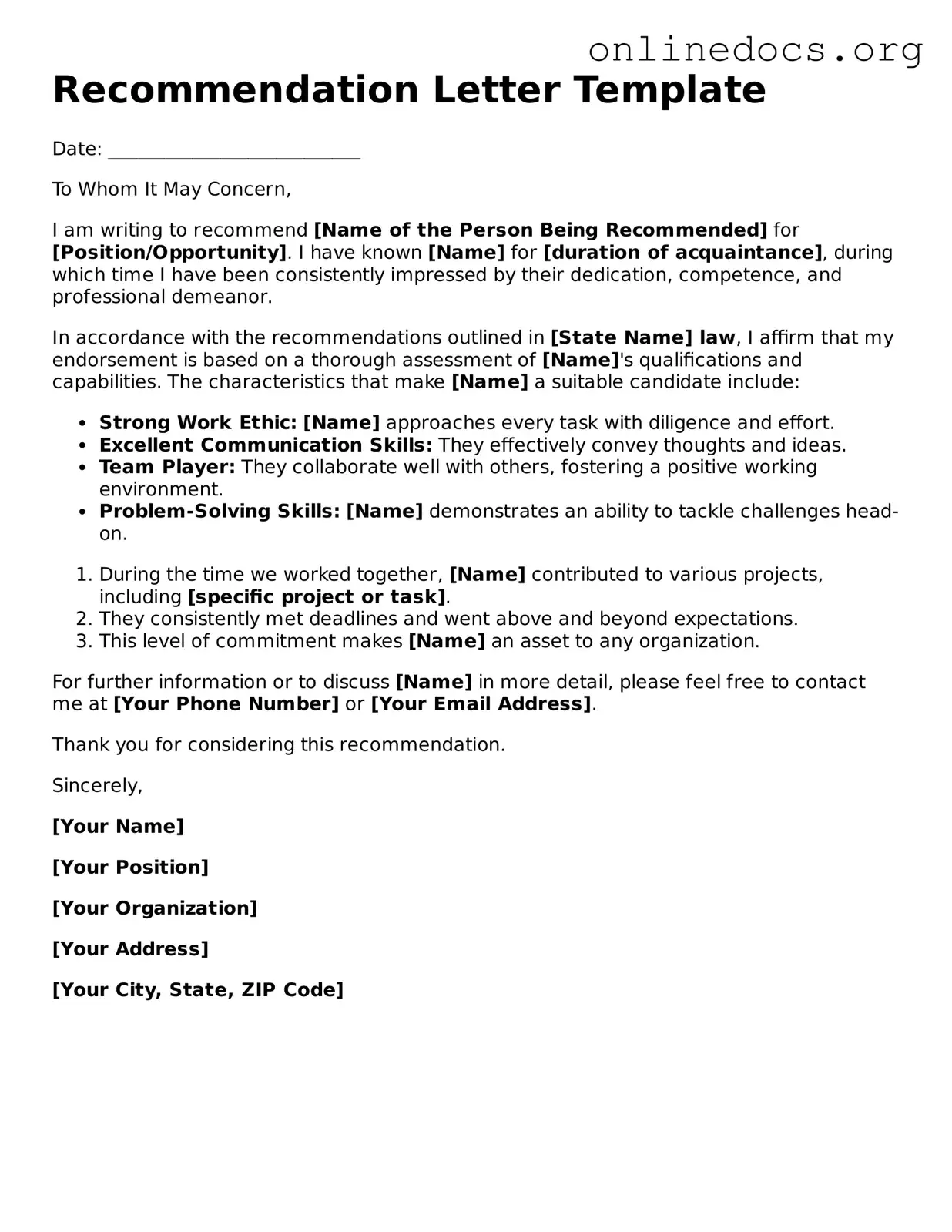A reference letter serves a similar purpose to a recommendation letter, as both documents provide insight into an individual's skills and character. Typically written by a former employer, teacher, or mentor, a reference letter often highlights specific experiences and accomplishments. It focuses on the individual’s qualifications and attributes that make them a suitable candidate for a job, educational program, or other opportunities. While a recommendation letter is usually more formal and tailored to a specific application, a reference letter can be more general and used in various contexts.
An endorsement letter shares similarities with a recommendation letter in that it supports a person’s qualifications for a specific role or opportunity. Endorsements are often provided by well-known figures or professionals in the same field, which can add weight to the candidate’s application. The tone of an endorsement letter can be more personal, showcasing the writer's relationship with the individual and their firsthand knowledge of their capabilities. Like recommendation letters, endorsements are meant to persuade the reader of the candidate’s suitability.
A letter of support is another document akin to a recommendation letter, although it may be used in different contexts, such as for grant applications or community projects. This type of letter outlines the writer’s belief in the value of the candidate’s work or project. It emphasizes the potential impact of the individual’s efforts and may include specific examples of their past achievements. While recommendation letters are often directed toward employment or academic pursuits, letters of support can be broader in scope, advocating for a person’s contributions to a cause or initiative.
A personal statement, while distinct from a recommendation letter, serves a similar function in presenting an individual’s qualifications and motivations. Typically written by the candidate themselves, it allows them to articulate their goals, experiences, and reasons for pursuing a particular opportunity. Unlike a recommendation letter, which is written by someone else, a personal statement offers a first-person perspective. It provides insight into the candidate’s character and aspirations, complementing the external validation provided by a recommendation letter.
An application essay can also be compared to a recommendation letter, particularly in academic settings. Both documents aim to convey the candidate’s suitability for a program or institution. An application essay often requires the individual to reflect on their experiences, values, and aspirations, thereby providing a narrative that supports their application. While recommendation letters come from external sources, application essays are personal reflections that give admissions committees a deeper understanding of the candidate’s motivations and character.
In the context of legal documents, the Texas Motor Vehicle Power of Attorney form is a vital tool for individuals who need to delegate responsibilities related to vehicle transactions, such as title transfers and registrations, to a trusted representative. By utilizing this Motor Vehicle Power of Attorney form, one can ensure that all necessary tasks are handled efficiently while retaining control over their vehicle-related affairs.
A curriculum vitae (CV) or resume, while primarily a factual document, shares some characteristics with a recommendation letter in that both are used to present an individual’s qualifications. A CV or resume lists education, work experience, skills, and accomplishments in a structured format. However, it lacks the personal touch and narrative style of a recommendation letter. Both documents work together to provide a comprehensive view of a candidate, with the CV or resume detailing qualifications and the recommendation letter offering personal insights and endorsements.
